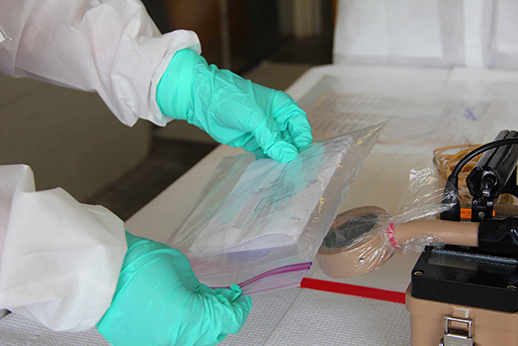


Taking part in seven drills this year helped the Radiological Emergency Response Team (RERT) section maintain the Hygienic Laboratory’s preparedness for radiological emergencies.
The RERT is part of Iowa’s Radiological Emergency Response program. This group provides field monitoring, technical consultation and initial accident assessment in coordination with the Iowa Department of Public Health.
The team also works with Iowa Homeland Security and Emergency Management Division (HSEMD) to prepare for the unlikely event of an act of terrorism or an accident at one of the four nuclear power plants in or near Iowa. The RERT and Radiochemistry Laboratory’s role is to evaluate the extent to which radioactive materials have been released from an incident.
Federal guidelines require emergency planning for areas within both a 10-mile and a 50-mile radius of a nuclear power station. The Laboratory also provides the following services:
- Field surveillance and monitoring of radiation levels, including coordination of environmental sampling with state and federal agencies;
- Dose assessment in support of IDPH;
- Laboratory analysis and support of environmental sampling and radiological monitoring activities during the emergency and post emergency;
- Maintenance and communication of data relating to radiation exposure and contamination; and
- Technical expertise to local emergency response personnel for monitoring and decontamination of evacuees.
- Participated in seven drills: four drills at Duane Arnold Energy Center, Palo, Iowa, and three at Ft. Calhoun Nuclear Station in Nebraska. (Drills are non-federally evaluated practice events, generally held quarterly.)
- Participated in a rehearsal and evaluated exercises for the Ft. Calhoun Nuclear Station. (A rehearsal is considered a practice before a federally evaluated exercise.)
- Performed initial evaluation and implementation of the RadResponder Network. This network assists in rapidly recording, sharing and aggregating large quantities of data during a radiological emergency.



